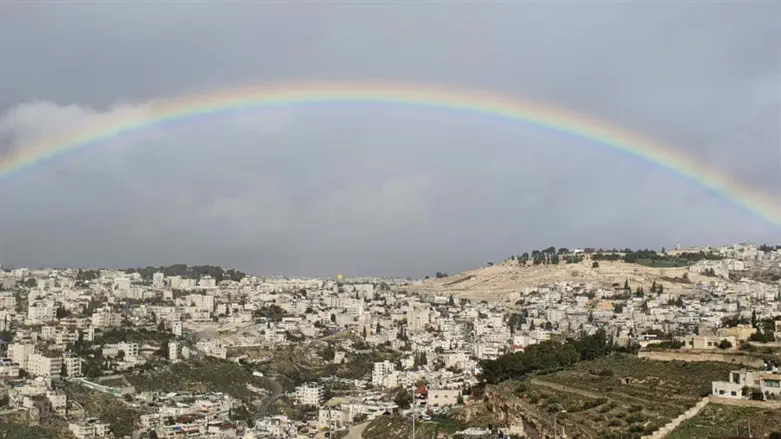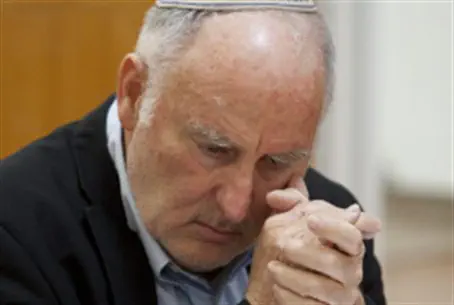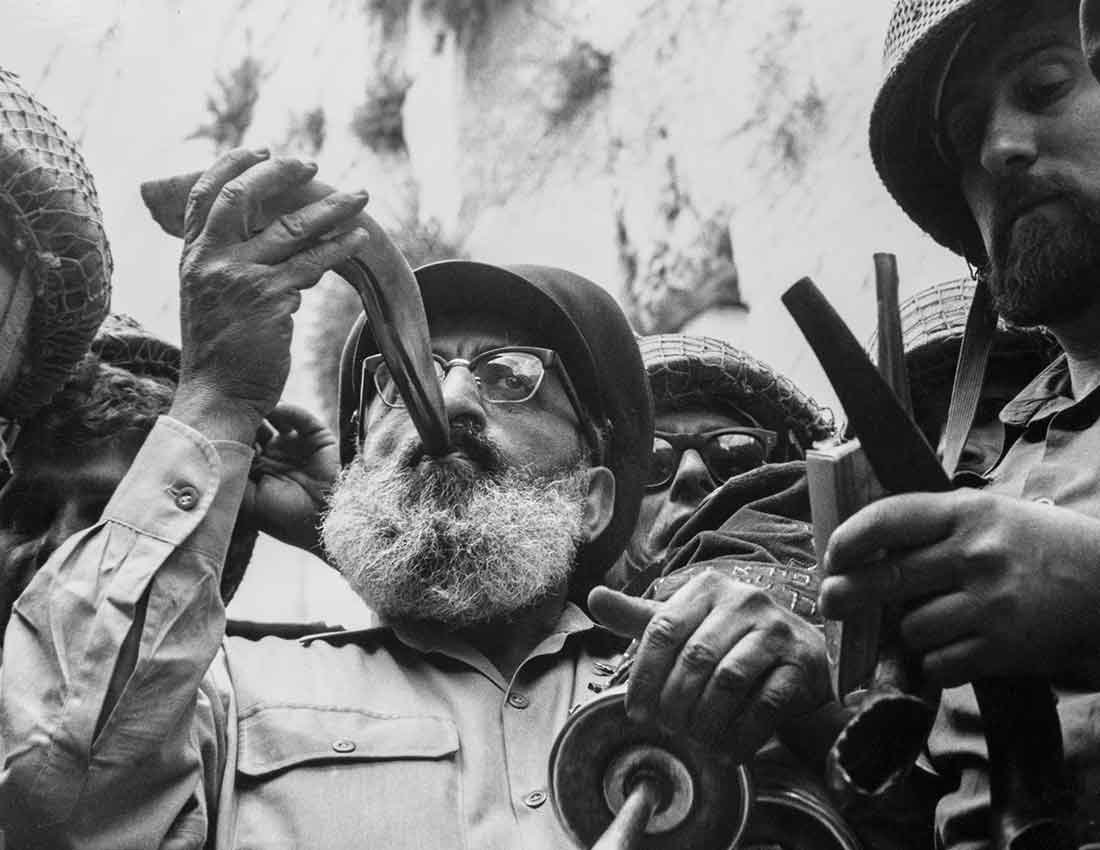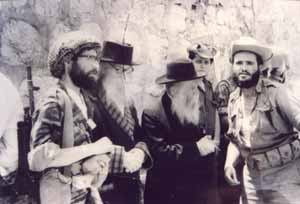
For more than 40 years, a Yom Kippur minyan founded by former IDF General, Rabbi Shlomo Goren, of blessed memory, has continued to draw ardent Jews to a place of prayer above the Kotel. Rabbi Goren was the Chief Rabbi of the Tzahal during the Six Day War. Later he became the Chief Rabbi of the State of Israel.
Above the Western Wall is a small hall that is half built by the Wall and half on an adjacent old building, The windows of the hall look down on the Temple Mount. The site is occupied by security forces all year round. It can only accommodate a few dozen worshipers; therefore you have to register in advance. Over the years, the once-secret minyan has become widely known for its view of the site of the Beit HaMikdash of old.
Rabbi Goren, who loved Ger Hasidic music and knew that I too was a fan of the lively and soulful melodies, appointed me to be the hazan at Mincha before the closing prayer. The prayer is short but due to the unique holiness of the location, I refused offers to be the cantor at other far larger synagogues.

It is a very great privilege to pray there, in the closest place that can be reached today on Yom Kippur due to the restrictions of Halakha and security concerns.
It is noteworthy to recall that on the day of the Temple Mount’s capture during the Six Day War, Rabbi Goren, who reached the site with the first Israeli Paratroopers, urged Defense Minister Moshe Dayan to take advantage of the moment and blow up the Shrine of the Dome which was built over the site of the Temple. Dayan refused.

After Rabbi Goren passed away, the minyan he founded continues with the same melodies. Today the service is organized by his son, lawyer Rami Goren, and his grandson, who is the head of the yeshiva Rabbi Goren established above the Kotel Plaza.
Once again this year we gathered on the night of Kol Nidre prayer. The veterans of the congregation are dwindling, but new worshipers are in attendance with great enthusiasm. Among them are students who study the Laws of the Beit HaMikdash and soldiers who have time off from their nearby patrols.
During the day, the Musaf prayer is led by former Lt. Col. Rabbi Yirael Ariel who served in the Paratrooper unit which conquered the Western Wall.

Rabbi Ariel, founder and director of the Temple Institute in the Old City, “lives” the days of the Temple. He is one of foremost experts in the Laws and legends of First and Second Temples. He has published beautifully illustrated books with artistic paintings about the Temple service and has commissioned the construction of many vessels that can be used when the Temple is rebuilt, may it be soon.
Today, thousands of sukkot throughout the country are decorated with the large artistic depictions of the Jerusalem Temple which the Institute produced. Rabbi Ariel’s holiday Makzor is filled with his hand-written notes about the prayers. A former resident of the Sinai community of Yamit which was destroyed in a peace agreement with Egypt, he used the compensation money which he received to commence the establishment of the Temple Institute and all of its educational branches.
In the make-shift synagogue overlooking the Holy of Holies, is an old ark containing the small Torah scroll of Rabbi Goren which accompanied him on the battlefields during the Six Day War. The scroll was written in memory of a soldier who fell in the battles of the War of Independence.
I stand moved and shaken during the long hours of prayer. Gazing through the windows overlooking the place of the Temple adds a special meaning to our requests for the Temple’s rebuilding. The unique location adds a profound reality when following the awe-filled Yom Kippur worship of the Kohen HaGadol when you can almost “hear” the echo of his prayers chanted before the people who gathered in the courtyard. Journeying back through Jewish history to the time of the Temples, in their grandeur and destruction, brings you forward to the time when the prayers shall be chanted in this very same holy place.
Looking towards the actual site and praying in its direction, knowing that under the floor of the alien shrine is the Holy of Holies of the Nation of Israel and the Foundation Stone of the world, you can picture (with the aid of the illustrations in the Temple Institute’s prayer book) the High Priest standing on Yom Kippur after a week of exercises during which the elders of the priests prepared him so that he would not go astray in his offering the sacrifices which came to atone for the sins of the People of Israel and to pave the wave for national Redemption.
Whose heart would not vibrate to be the closest to the place where the entire Jewish World focuses their hearts in unity on Yom Kippur – Jews still scattered in the Diaspora and the Jews in Israel? Fortunate is the people who has merited such closeness to Hashem. Blessed is the people who for generations did not have this privilege, baruch Hashem.
But still..
To see the place of the Temple in the hands of foreigners and enemies and not be able to reach it…
To pray the prayers that deal with Yom Kippur, the avodah of the priests and the Temple service from such a short distance away yet still so painfully beyond our reach… there is also a feeling of great anguish that the main thing is lacking and that our Redemption is not yet complete. Nevertheless, the joy of Sukkot is approaching and we must take comfort in knowing that the dream of generations is not far away.
May we be privileged to see priests in their work and singers in their song, and may the Temple be built soon in our day.
Lt. Col. res. Meir Indoris Chair of the Alamagor terror victims association